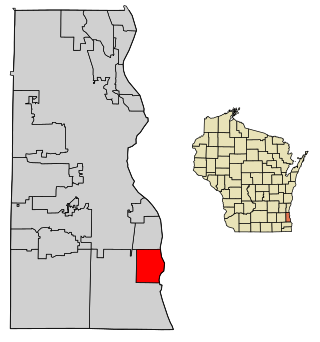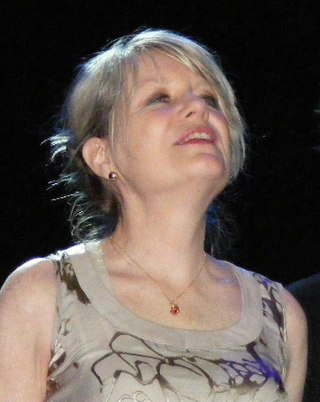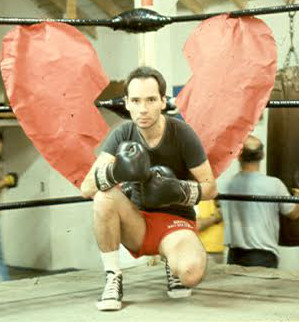
Chicano or Chicana is an ethnic identity for Mexican Americans who have a non-Anglo self-image, embracing their Mexican Native ancestry. Chicano was originally a classist and racist slur used toward low-income Mexicans that was reclaimed in the 1940s among youth who belonged to the Pachuco and Pachuca subculture. In the 1960s, Chicano was widely reclaimed in the building of a movement toward political empowerment, ethnic solidarity, and pride in being of indigenous descent. Chicano developed its own meaning separate from Mexican American identity. Youth in barrios rejected cultural assimilation into the mainstream American culture and embraced their own identity and worldview as a form of empowerment and resistance. The community forged an independent political and cultural movement, sometimes working alongside the Black power movement.

South Milwaukee is a city in Milwaukee County, Wisconsin, United States. The population was 20,795 at the 2020 census.

A counterculture is a culture whose values and norms of behavior differ substantially from those of mainstream society, sometimes diametrically opposed to mainstream cultural mores. A countercultural movement expresses the ethos and aspirations of a specific population during a well-defined era. When oppositional forces reach critical mass, countercultures can trigger dramatic cultural changes. Prominent examples of countercultures in the Western world include the Levellers (1645–1650), Bohemianism (1850–1910), the more fragmentary counterculture of the Beat Generation (1944–1964), and the globalized counterculture of the 1960s (1965–1973). Countercultures differ from subcultures.

Martina Michèle "Tina" Weymouth is an American musician, singer, songwriter, and a founding member and bassist of the new wave group Talking Heads and its side project Tom Tom Club, which she co-founded with her husband, Talking Heads drummer Chris Frantz. In 2002, Weymouth was inducted into the Rock and Roll Hall of Fame as a member of Talking Heads.
Queercore is a cultural/social movement that began in the mid-1980s as an offshoot of the punk subculture and a music genre that comes from punk rock. It is distinguished by its discontent with society in general, and specifically society's disapproval of the LGBT community. Queercore expresses itself in a DIY style through magazines, music, writing and film.

Cherríe Moraga is a Xicana feminist, writer, activist, poet, essayist, and playwright. She is part of the faculty at the University of California, Santa Barbara in the Department of English since 2017, and in 2022 became a distinguished professor. Moraga is also a founding member of the social justice activist group La Red Xicana Indígena, which is network fighting for education, culture rights, and Indigenous Rights. In 2017, she co-founded, with Celia Herrera Rodríguez, Las Maestras Center for Xicana Indigenous Thought, Art, and Social Practice, located on the campus of UC Santa Barbara.
Elsa Flores is a well known Chicana street artist. Her mother's name was Maria Valenzuela and she was originally from a small village called San Javier located in Sinaloa, Mexico. She is one of the best known members of the Chicano street art movement.

Chicana feminism is a sociopolitical movement, theory, and praxis that scrutinizes the historical, cultural, spiritual, educational, and economic intersections impacting Chicanas and the Chicana/o community in the United States. Chicana feminism empowers women to challenge institutionalized social norms and regards anyone a feminist who fights for the end of women's oppression in the community.

The counterculture of the 1960s was an anti-establishment cultural phenomenon and political movement that developed in the Western world during the mid-20th century. It began in the early 1960s, and continued through the early 1970s. It is often synonymous with cultural liberalism and with the various social changes of the decade. The effects of the movement have been ongoing to the present day. The aggregate movement gained momentum as the civil rights movement in the United States had made significant progress, such as the Voting Rights Act of 1965, and with the intensification of the Vietnam War that same year, it became revolutionary to some. As the movement progressed, widespread social tensions also developed concerning other issues, and tended to flow along generational lines regarding respect for the individual, human sexuality, women's rights, traditional modes of authority, rights of people of color, end of racial segregation, experimentation with psychoactive drugs, and differing interpretations of the American Dream. Many key movements related to these issues were born or advanced within the counterculture of the 1960s.

Adam Mitchel Lambert is an American singer, songwriter and actor. He has collaborated with rock band Queen as lead vocalist for Queen + Adam Lambert since 2011. Lambert is known for his dynamic vocal performances that combine his theatrical training with modern and classic genres.
Lesbian, gay, bisexual, transgender, and queer+(LGBTQ+)music is music that focuses on the experiences of gender and sexual minorities as a product of the broad gay liberation movement.

Asco was an East Los Angeles based Chicano artist collective, active from 1972 to 1987. Asco adopted its name as a collective in 1973, making a direct reference to the word's significance in Spanish ("asco"), which is disgust or repulsion. Asco's work throughout 1970s and 1980s responded specifically to socioeconomic and political problems surrounding the Chicano community in the United States, as well the Vietnam War. Harry Gamboa Jr., Glugio "Gronk" Nicandro, Willie F. Herrón III and Patssi Valdez form the core members of the group.

Paris, the capital of France, has an active LGBT community. In the 1990s, 46% of the country's gay men lived in the city. As of 2004, Paris had 140 LGBT bars, clubs, hotels, restaurants, shops, and other commercial businesses. Florence Tamagne, author of "Paris: 'Resting on its Laurels'?", wrote that there is a "Gaité parisienne"; she added that Paris "competes with Berlin for the title of LGBT capital of Europe, and ranks only second behind New York for the title of LGBT capital of the world." It has France's only gayborhoods that are officially organized.

Jerry Dreva (1945–1997) was an artist, writer, performer, activist, and teacher from South Milwaukee, Wisconsin. He was a principal proponent of Mail art. His efforts were concentrated in the areas of self-documentation and performance, often employing subterfuge and a wry sense of humor. He was a founding member of the conceptual rock band Les Petites Bon-Bons.
Donald Burgy is an American conceptual artist, author, and teacher. He is Professor Emeritus in the Studio for Interrelated Media at Massachusetts College of Art and Design in Boston. He earned a Bachelor of Fine Arts from the Massachusetts College of Art and Design in Boston in 1959 and a Master of Fine Arts from Rutgers University in 1963. Burgy began his teaching career in 1960 teaching art in public schools in Quincy and Chicopee in MA, and in Brentwood, NY. From 1966 - 1973, Burgy taught Art History and Art Studio at the Bradford Junior College in Bradford, MA. He was the chair of the Art Department at Milton Academy in Milton, MA from 1973 - 1975. Burgy taught Studio Art at Harvard University before his tenure at the Massachusetts College of Art and Design in the Studio for Interrelated Media in Boston from 1971 until 2001. Donald Burgy has studied neurology, cosmology, and Paleolithic art as the basis for his conceptual artwork since 1969.

The AIDS pandemic began in the early 1980s and brought with it a surge of emotions from the public: they were afraid, angry, fearful and defiant. The arrival of AIDS also brought with it a condemnation of the LGBT community. These emotions, along with the view on the LGBT community, paved the way for a new generation of artists. Artists involved in AIDS activist organizations had the ideology that while art could never save lives as science could, it may be able to deliver a message. Art of the AIDS crisis typically sought to make a sociopolitical statement, stress the medical impact of the disease, or express feelings of longing and loss. The ideologies were present in conceptions of art in the 1980s and are still pertinent to reception of art today as well. Elizabeth Taylor, for example, spoke at a benefit for AIDS involving artwork, emphasizing its importance to activism in that "art lives on forever". This comment articulates the ability of artwork from this time to teach and impact contemporary audiences, post-crisis. This page examines the efforts of artists, art collectives, and art movements to make sense of such an urgent pandemic in American society.

Raymond Robert Navarro was an American video artist, filmmaker, and HIV/AIDS activist. Navarro was an active member of ACT UP and a founder of Diva TV. His activism was featured in the documentary How to Survive a Plague. Navarro's art was exhibited at the Institute of Contemporary Art, Boston, Museum of Contemporary Art, Los Angeles, Tacoma Art Museum, Bronx Museum of the Arts, and Museum of Contemporary Art, Cleveland, among others. Navarro's papers, videos, and artworks are held at the ONE National Gay & Lesbian Archives at the USC Libraries in Los Angeles.
Edmundo Meza, also known as Mundo Meza, was an artist and activist who was born in Tijuana, Mexico and grew up in East Los Angeles. He discovered his passion for the area's avant-garde culture in early 1970. As an emerging artist, Mundo Meza worked for shoe designer Fred Slatten on Santa Monica Boulevard as a window dresser. He also painted unique designs onto Slatten's platform shoes, gathering a celebrity clientele which included Cher, Elton John, and Diana Ross.
Joey Terrill is an American Chicano queer visual artist. He works in the mediums of painting, collage, drawing, and photography. His work often pays tribute to gay visual artist, and features Chicano themes. Terrill uses inspiration from cartoons, magazines, 1950s and 1960s art movements, and comics to produce his work. He is based in Los Angeles.
The Queer Chicano art scene emerged from Los Angeles during the late 1960s and early 1990s composing of queer Mexican American artists. The scene’s activity included motives and themes relating to political activism, social justice, and identity. The movement was influenced by the respective movements of gay liberation, Chicano civil rights, and women’s liberation. The social and political conditions impacting Chicano communities as well as queer people, including the HIV/AIDS epidemic, are conveyed in the scene’s expressive work.













